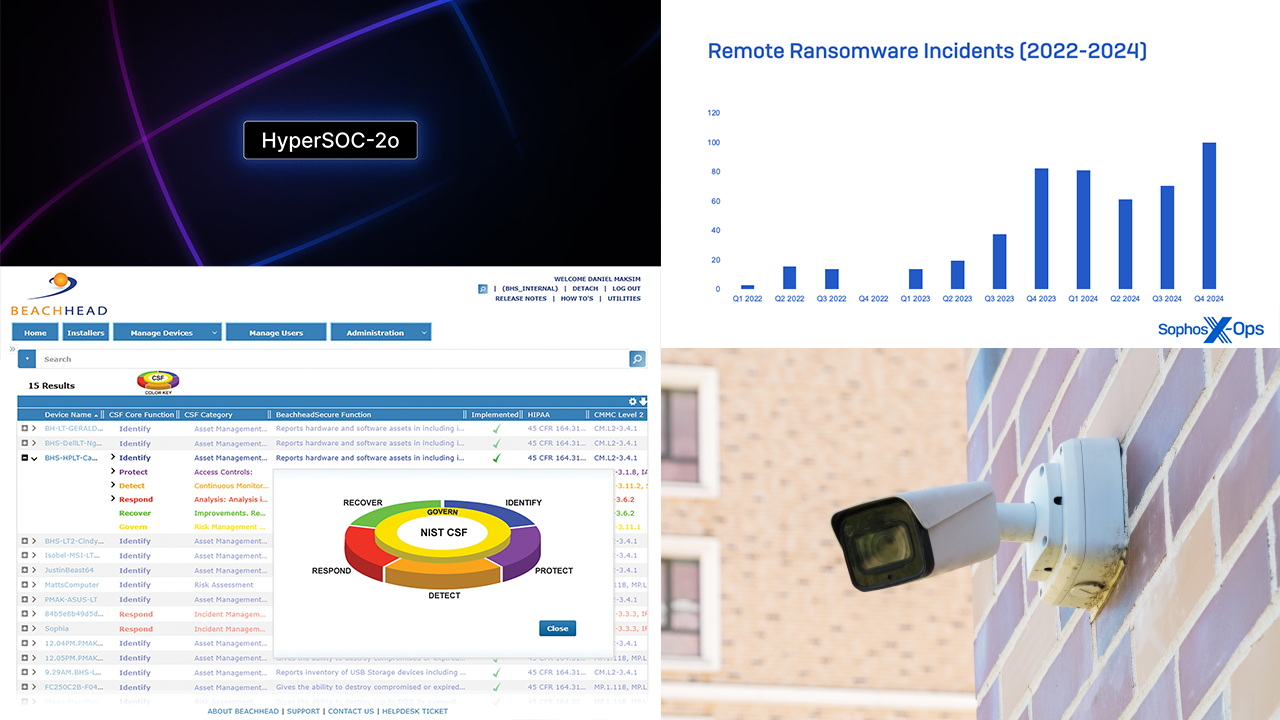Each December, as workers in Times Square prepare the world’s most famous crystal ball for its famous New Year’s Eve descent, ChannelPro-SMB asks some of SMB technology’s most respected prognosticators to gaze into their own crystal balls and tell us what they see. The following includes their expert forecasts, bold conjectures, and wild guesses for 2013 in eight key markets and for the partner community at large – along with some even more daring predictions about the coming year’s most overlooked and underappreciated “sleeper” stories.
CLOUD COMPUTING
Will cloud computing continue its steady conquest of the IT world in 2013? Absolutely, says Larry Walsh, president and CEO of Port Washington, N.Y.-based channel advisory firm The 2112 Group. Will it generate increased profits for channel pros as well? Maybe not so much.
“I’m not very bullish on cloud,” Walsh says. “Channel partners in general are going to continue to adapt and evolve cloud offerings, but [they are] still going to make up a minority of their revenue.”

“Channel partners in general are going to continue to adapt and evolve cloud offerings, but it’s still going to make up a minority of their revenue.” Larry Walsh, President and CEO, The 2112 Group
Indeed, more than half of channel partners currently earn less than 10 percent of their gross revenue from the sale of cloud products and services, according to the latest results of an annual 2112 Group survey. Every year, Walsh adds, participants in that survey see higher cloud earnings just around the corner, and every year their optimism proves misplaced. “There [are] numerous solution providers that are making a very good living out of the delivery of cloud products and services, but they’re the outliers at this point,” Walsh says.
That will remain true, he continues, until channel pros start thinking about cloud solutions as an entirely new business model rather than just another service offering. “They have to look at cloud strategically,” Walsh argues. That means assessing their customers’ needs, inventorying their own capabilities, building a detailed business plan, and retooling their sales and marketing processes for greater velocity.
All of that is time-consuming but essential work, Walsh says, if you wish to compete with “born in the cloud” channel partners like Cloud Sherpas, a Google Apps and Salesforce.com reseller based in Atlanta. Walsh sees such companies as the biggest threat to more established solution providers in 2013 and beyond, thanks to their superior aptitude for using cloud-based solutions to increase productivity and profits. “That’s a different value proposition,” Walsh observes. “The average MSP is more focused on keeping the servers running.”
PARTNER COMMUNITY
Harry Brelsford, CEO of Bainbridge Island, Wash.-based SMB Nation Inc., has his own concerns about cloud computing. Citing estimates from both Walsh and Gartner analyst Tiffani Bova that the shift to cloud computing could kill off anywhere from 25 to 60 percent of the SMB channel, Brelsford believes the partner community is in for some serious contraction, if not next year then soon thereafter. “There’s going to be a shakeout,” he says. “Inefficient channel partners just can’t transform to new business models.”
“There’s going to be a shakeout. Inefficient channel partners just can’t transform to new business models.” Harry Brelsford,
CEO, SMB Nation
Partners who survive that brutal culling, however, will be stronger for having gone through it, Brelsford believes. “There’s going to be a flight to quality where partners that are serious are going to sort it out and make more money,” he says.
They’ll also reinvent the partner community for a new era, Brelsford predicts. “The nature of community is morphing,” he says, with peer groups like those operated by Harlan, Iowa-based HTG Peer Groups assuming a more central role. Unlike the local user groups that have traditionally defined the partner community, peer groups demand more discipline and effort from their members. “You’re going to have to add value to the community gatherings,” Brelsford states, adding that most peer group members feel that the payoff is worth it.
MANAGED SERVICES
Not surprisingly, Charles Weaver expects solving the cloud conundrum to preoccupy MSPs in 2013 as well. For most of them, he notes, simply reselling hosted solutions like Microsoft Office 365 won’t be the answer. “I don’t see how you can economically make a business model around just a public cloud offering,” says Weaver, who is CEO of MSPAlliance, an industry association and accrediting body for the managed services industry based in Chico, Calif.

“All signs generally point to a very good next year for our industry.” Charles Weaver, CEO, MSPAlliance
A better bet, Weaver believes, will be selling – and then maintaining – private clouds. Though he won’t name names, Weaver says several vendors have packaged solutions in the works that will make rolling out affordable, SMB-size private clouds much simpler. “There’s some really revolutionary things coming out,” Weaver states.
With the prospect of recession looming over both Europe and Asia, economic turmoil could be a major theme in managed services next year as well, Weaver believes. That’s actually good news for MSPs though, he adds, because an uncertain business climate makes converting IT into an operating expense even more appealing for SMBs than usual. “All signs generally point to a very good next year for our industry,” Weaver says.
Unless, that is, meddling bureaucrats in Washington, D.C., introduce the nation’s first managed service regulatory requirements. Officials in the European Union are currently drafting standards for how MSPs handle matters like security and data access rights, and Weaver fears the United States may soon follow suit. “If that ever comes officially, I don’t think it will be good for the industry at all,” he says.
MOBILITY
The outlook for mobility in 2013, on the other hand, is nothing but good, according to Laurie McCabe, a partner at analyst firm SMB Group Inc., of Northborough, Mass. “This is a huge opportunity,” she says. “There are so many areas where SMBs are going to be looking for help.”

“[Mobility] is a huge opportunity. There are so many areas where SMBs are going to be looking for help.” Laurie McCabe,
Partner, SMB Group
Developing customized mobile apps and integrating apps with back-end business systems will be two of the biggest such areas, McCabe contends. Helping SMBs attract new customers via mobile solutions that interface with social networks and location-specific services like Foursquare could be profitable as well. “That whole idea of being able to have different things that you do on your device [be] much more sensitive to where you are and capitalizing on that as a business … is going to become more and more important next year,” McCabe says.
In addition, she continues, look for Microsoft’s Windows 8 operating system to spark wider availability of more affordably priced tablet computers. “There will be more price pressure and more tablets available,” she says. “All of that is going to make tablets even more popular.”
HARDWARE
Todd Swank expects to see lots of new tablets next year too, along with a slew of touch-enabled laptops, convertibles, and ultrabooks. “There are going to be some really, really neat products coming out,” predicts Swank, who is vice president of marketing at Northern Computer Technologies, a system builder in Burnsville, Minn. Economically priced touchscreen monitors will appear in bigger numbers as well, he adds, bringing fingertip navigation to desktops, digital signage solutions, and point-of-sale systems.
Looking for an emerging market to conquer? Think small, Swank advises. Demand for embedded form factors is growing as businesses in multiple industries make greater use of kiosks, wall-mounted signage displays, and other systems powered by compact computers like Intel’s new 4-inch x 4-inch Next Unit of Computing product.
Business solutions equipped with hands-free input devices like Microsoft’s Kinect gaming system are another emerging market poised for takeoff, Swank believes. Retail and healthcare are just two of many verticals likely to find systems that can be controlled with a swipe of the hand appealing. “Motion-sensing technology will be a big storyline in 2013 that I don’t think a lot of people are focused on yet,” he says. That makes now the perfect time for channel pros to get in on the action early.
STORAGE
The top story for 2013 in the storage market won’t be a new technology so much as accelerated adoption of an existing one, according to George Crump, president of consulting firm Storage Switzerland LLC. “We’ll see SSD/flash storage continue to make inroads into data centers of all sizes, we’ll see the price of flashed-based systems continue to decline, and we’ll see the performance of those systems continue to improve,” Crump says. “Eventually it will be impossible to buy storage without at least an SSD component.”

The real winners in cloud storage will be solution providers with a storage cloud of their own. George Crump, President, Storage Switzerland LLC
The coming year will be kind to cloud-based storage solutions too, Crump predicts, as businesses large and small make increased use of online repositories for backup and more. Though partners can generate decent money reselling third-party offerings, he continues, the real winners in cloud storage will be solution providers with a storage cloud of their own. Channel pros can build a starter infrastructure for less than $100,000, and many SMBs would rather work with a local company they know than a faceless corporate leviathan like Amazon. “We think there’s a big market for regional and even subregional providers,” Crump says.
It won’t get nearly as much attention, but Crump expects a venerable storage standby from years past – tape – to experience rising demand in 2013 as well. “The interest in tape lately has been absolutely astounding,” he remarks. That’s partly because tape-based products have become faster and easier to integrate with other storage systems and partly because a new generation of IT professionals raised on disk-based solutions is slowly rediscovering tape’s virtues as a portable, cost-effective storage option.
BACKUP AND DISASTER RECOVERY
Greg Schulz, founder and senior analyst at the StorageIO Group, a technology consulting firm in Stillwater, Minn., may want to consider a second career as a soothsayer based on the startling prescience of his top prediction for 2013.
“We’re overdue for some major hurricane [or] a major earthquake,” said Schulz in an early October interview for this article. Sure enough, just a few weeks later, on October 29, Superstorm Sandy swept across the northeastern United States, leaving behind a trail of wreckage and devastation.
“We’re going to be under tough economic challenges into the next year, but there’s also no such thing as a data recession.” Greg Schulz, Founder and Senior Analyst , Storage I/O Group
One of the few positive repercussions of calamites like that, Schulz notes, is that they often inspire increased deployment of backup and disaster recovery systems. If that pattern holds true again, there should be a surge in data protection spending by small business owners next year – despite what could be even tighter budgets than usual. “We’re going to be under tough economic challenges into the next year, but there’s also no such thing as a data recession,” Schulz observes.
Schulz expects the BDR vendor community to grow smaller next year too. With new solutions arriving in an already crowded market seemingly every week, conditions are ripe for a wave of consolidation, he notes. “You’ll see some shakeout there,” Schulz says. “Some of the bigger, more traditional [vendors] will do some acquisitions.”
DIGITAL SIGNAGE
Big vendors will play a central role in one of 2013’s most significant digital signage developments as well, according to Sanju Khatri, director of signage and public information displays at IHS iSuppli, a market intelligence and analyst firm. Just as in 2012, major TV manufacturers like LG, Samsung, and NEC will continue introducing inexpensive commercial displays based on consumer-oriented televisions. Though most such products aren’t durable enough for 24/7 use, Khatri notes, SMBs usually find them more than adequate for solutions that run only during business hours. “As long as the economy is in flux I think that trend will continue,” she says.
Khatri’s colleague Shane Walker, who is U.S. operations associate director at InMedica, a division of IMS Research (now part of IHS), foresees solid demand for several other signage products next year. Declining prices for large displays will ramp up sales of high-impact, multipanel “video wall” solutions, he contends, while self-serve, point-of-sale solutions featuring sub-30-inch screens will prove popular as well. Meanwhile, he continues, a new class of solid-state media players capable of delivering the fast performance traditionally associated with PC-based systems will gain admirers in the retail market and other verticals. BrightSign LLC, of Los Gatos, Calif., launched the first such product in October.
SECURITY
Same old, same old is the forecast for the security market in 2013, according to Larry Ponemon, chairman and founder of Traverse City, Mich.-based security research and advisory firm Ponemon Institute LLC. Malware, spyware, and unauthorized intrusions will continue to proliferate, and protecting SMBs from those threats will remain a dependable source of revenue for channel partners. “All the evidence suggests that the frequency and severity of cyber attacks are on the rise,” Ponemon says. “2013 will be a good year for security and a great year for security in the SMB marketplace.”

“2013 will be a good year for security and a great year for security in the SMB marketplace.” Larry Ponemon, Chairman and Founder, Ponemon Institute LLC
With the soft economy making capital preservation a higher priority for business owners, managed security providers should be in for especially brisk growth, Ponemon asserts. “These organizations can provide services at a reasonable cost, and you don’t have to make big investments in technology because you’re basically renting [it],” he notes.
Ponemon anticipates equally strong spending on security software next year. In particular, ever-multiplying data privacy regulations will drive heightened demand for encryption systems, he predicts, while skyrocketing workplace use of portable devices will inspire similarly robust sales of mobile security solutions. “Tablets and smartphones are a source of great risk,” Ponemon observes.
2013 could be a breakthrough year for security intelligence solutions too, Ponemon adds. Such systems sift through reams of network data for telltale signs of hidden dangers. And while high prices have confined them mostly to large businesses so far, vendors like Q1 Labs and LogLogic Inc. (which are owned by IBM and Tibco, respectively) are now rolling out less costly, cloud-based solutions. “Security intelligence tools are very, very important in a world in which you can’t really rely on the perimeter anymore,” Ponemon says. And thanks to trends like BYOD, he notes, that’s the world we all occupy now.













